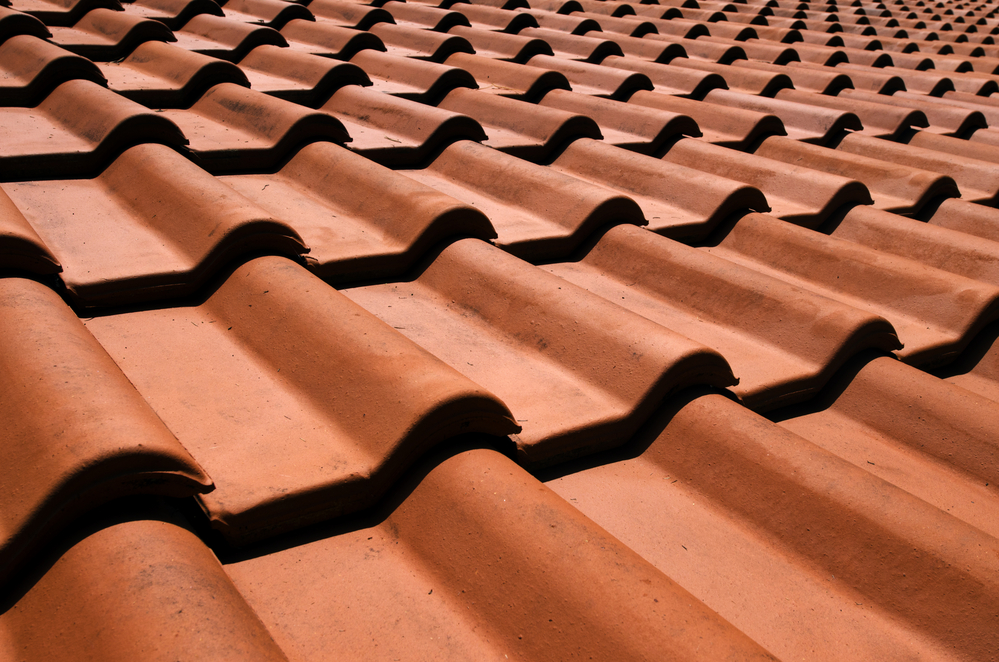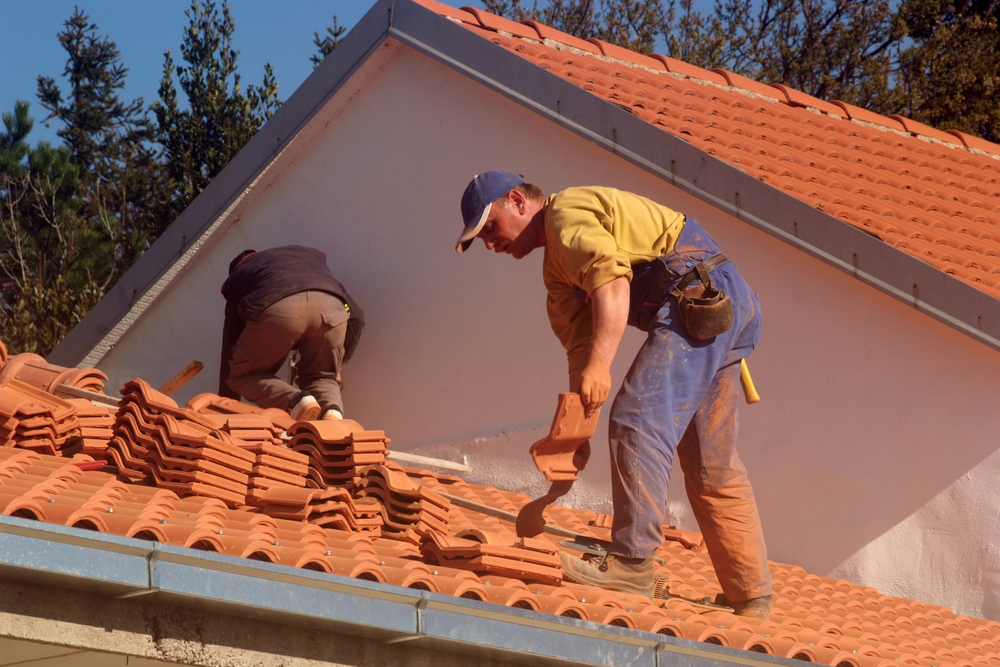Clay tile roofs date back to thousands of years, so they’re one of the oldest roofing materials. While there are several different types of clay terracotta roofs, Spanish tile roofing has become a popular choice in the American Southwest and Southeast because of its ability to transfer heat in hotter climates.
Spanish tiles are made in a rounded “S” shape. They also lack the feature covers and pans that you will find on Mission-style and other types of clay roofing tiles. Because of their uniform design, Spanish tile roofing can’t be staggered (which makes it harder to install). But, both Mission-style and Spanish tiles require eave closures to protect the roof deck from moisture and pests.

Different Types of Spanish Tile
Spanish tiles are usually made out of clay that’s mixed with either terracotta or ceramic. Terracotta tiles are made almost exclusively from pure clay, while ceramic tiles are made with a mixture of clay and other ingredients. While both of them are heated in a fire to harden them, the ingredients will produce slightly different results. Ceramic tiles have a more finished look, while terracotta tiles have a more rustic appearance. Terracotta tiles are also more resistant to breaking, which can be an advantage if you’re looking for an option with better durability.
The Cost of Spanish Tile Roofing
Clay roof tiles aren’t cheap, and Spanish tiles are no exception. You can expect to pay $8-$25 per square foot for a Spanish tile installation, which is double the cost of asphalt shingles. If you’re on a budget, composite Spanish roof tiles are much cheaper at $8-$10 per square foot. But, it won’t have the same appearance.
The Benefits of Spanish Tile Roofing
Aside from its aesthetic qualities and long lifespan, there are several benefits to using Spanish tile over its less expensive counterparts. Some of them include:
- Fire and Heat Resistance — Not only can Spanish tiles reflect heat from the sun, but they can also insulate your home during the colder months. Because of their curved appearance, it has better ventilation (which can keep hot air out). Spanish tile roofing also has a Class A fire rating, so they have a great deal of fire resistance.
- Low Maintenance — While installing a Spanish tile roof will cost you more up front, you’re less likely to spend that much on repairs and maintenance. It even holds up against strong winds, which can be an advantage if you live in an area that experiences a great deal of extreme weather events (such as hurricanes and tornadoes).
- Long Lifespan — Because of their ability to endure extreme weather conditions, Spanish tile roofs will practically last a lifetime. You can even expect a Spanish tile roof to last up to 100 years or more. That’s why many companies that manufacture this type of roofing will offer a materials warranty of 50-70 years.
- Better Curb Appeal — Installing a new roof can improve your home’s value by up to $15,000, but homes with Spanish tile and other types of clay roofing can sell even faster than if it were made of other roofing products (such as asphalt shingles). Because of its long lifespan, environmentally-friendly materials, and rustic look, Spanish tile can improve your home’s value.
Be sure to speak to a professional roofer for more information.
The Drawbacks of Spanish Tile Roofing
While Spanish tile has its benefits, it does have its drawbacks. Some of them can include:
- Expensive — The biggest downside to Spanish tile roofing is its high price tag. Not only are the materials expensive, but it’s also more difficult to install. It requires the special skill of a roofing contractor, so it’s not a DIY-friendly option.
- Fragile — While Spanish tile can endure most extreme weather conditions, they’re more likely to crack or break from heavy impact or cold temperatures. That’s why clay tiles perform better in warmer, drier climates.
- Heavy — Spanish tile and other types of clay roofing are extremely heavy and may even require structural reinforcement. A single square foot of clay tile can weigh between 800 and 1,250 pounds, so you should check the underlayment and the rest of your roofing system to make sure it meets local building codes.
- Roof Slope Requirements — Most roofing materials have a minimum slope requirement, or you could violate your warranty and even certain building codes. This is all in addition to a decrease in roof performance. A lot of materials (such as clay tiles, wood shakes, slate, and metal roofing) will typically require a 4:12 roof slope.
If you’re looking for one of the best roofers in Corpus Christi to help you with your next installation or repair, be sure to get in touch with B. Ramirez Roofing.

